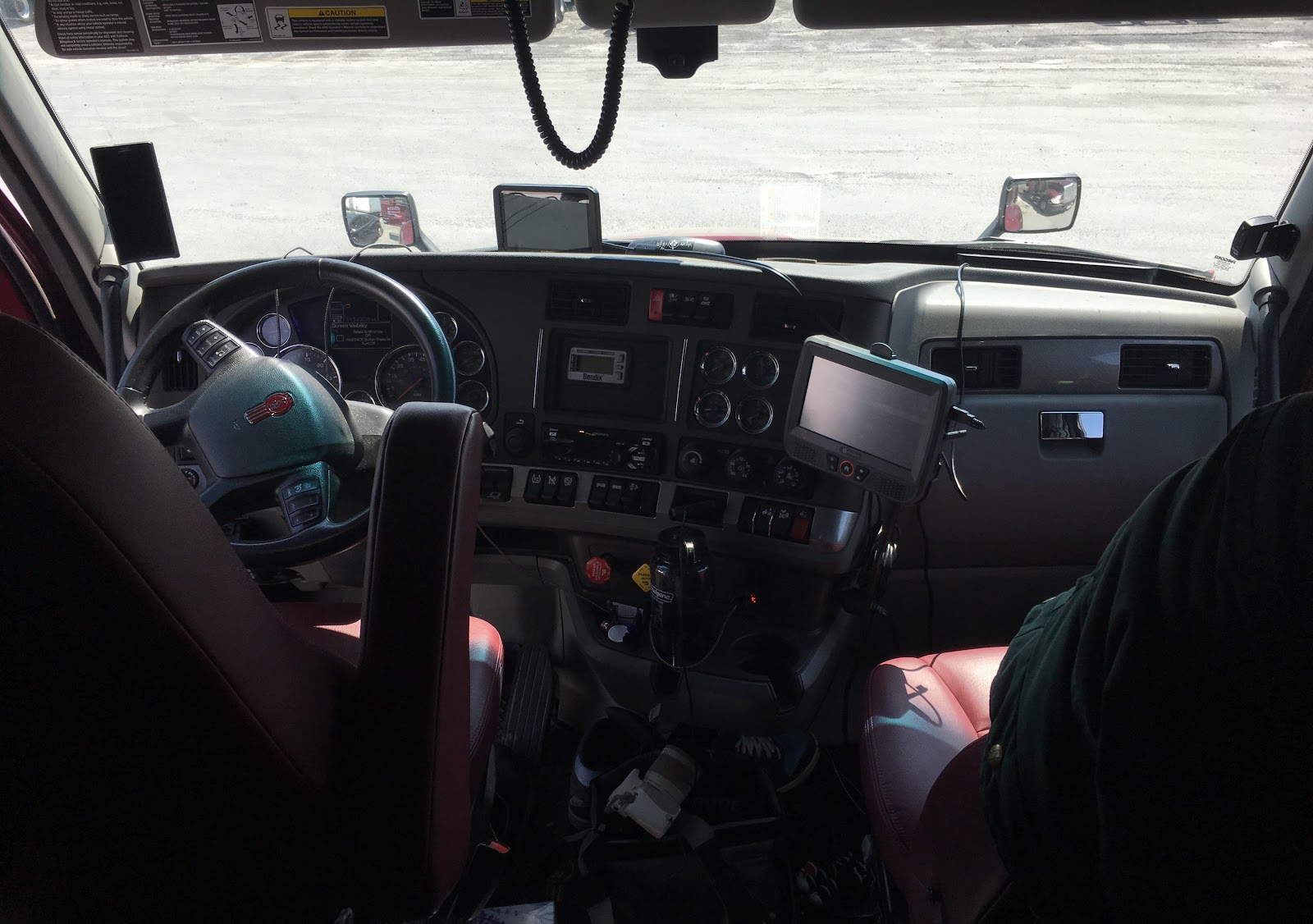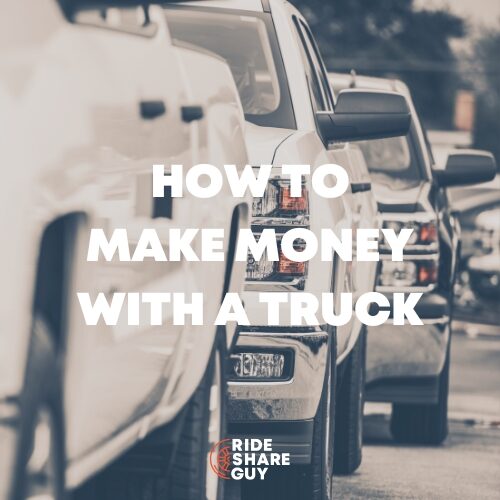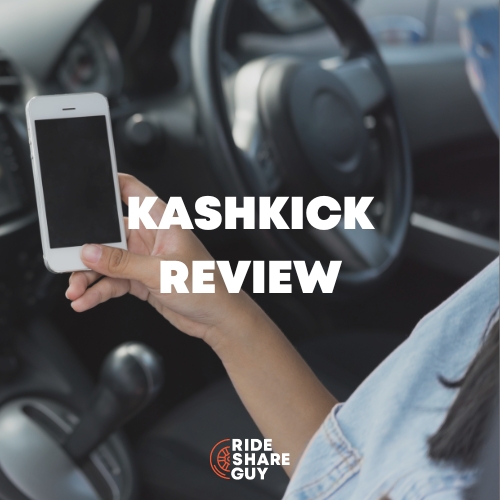Throughout our series on truck driving, readers asked us what truck driving is like nowadays. RSG contributor-at-large Jon Knope reviews The Big Rig: Trucking and the Decline of the American Dream in comparison to when the book was written (mid-2000s) vs. how trucking is like in 2018 to today. While it’s true trucking went through a perilous decline, Jon counters that trucking in recent years has become more viable for drivers looking to ‘make it’ as truckers.
Every industry has its injustices, and trucking is no exception. In The Big Rig: Trucking and the Decline of the American Dream, author Steve Viscelli offers a well-researched, if slightly dated critique of the industry’s treatment of workers.
The book’s focus is twofold. First, author Steve Viscelli details his own experience getting started as an over-the-road truck driver. The second half details the industry’s more recent efforts to squeeze more profit from workers for less money, in particular by pushing exploitative lease-purchase agreements.
To explore these topics in greater detail, Mr. Viscelli interviewed dozens of people, including 75 truckers, and reviewed numerous academic studies and trade publications. He also explains how the ripples of deregulation and the destruction of the Teamsters union in the 1980s are still felt today.
As a truck driver, the first thing that struck me was how much the industry has changed just since this book was written. Although it was published in 2016, Mr. Viscelli’s time as an actual driver, as well as most of his driver interviews, took place between 2005 and 2007. That doesn’t mean that everything in the book is outdated, though. The first thing Viscelli discusses is the process of going through training, which, save for some minor details, was almost exactly like my becoming a truck driver experience.
Quick links:
- Read Jon’s review of The Long Blink: One Parent’s Quest to Make US Roads Safer
- All of our articles on becoming a truck driver
- Purchase a copy of The Big Rig: Trucking and the Decline of the American Dream

Becoming a Trucker
Getting a Commercial Drivers License (CDL) costs money. Viscelli rightfully points out that when signing up for training through a specific trucking company, folks are often putting themselves in several thousand dollars worth of debt for what amounts to a super-stressful, multi-week job interview. Not everyone who attends training comes out the other side with a job, or even a CDL, but they still have to pay the tuition cost either way – usually between $3000 and $6000. Even those that make it through the training are usually stuck at lower-paying “starter companies” until they have the requisite one year of experience to switch to something better.
This isn’t how most jobs work. But I think Viscelli is overly critical of the company training process. Don’t get me wrong. I’m not defending the training system – it’s awful and difficult and nerve-wracking to go into debt to maybe get a job.
On the other hand, college works pretty much the same – and getting a CDL is both cheaper and faster than getting a degree. Plus, there’s more than one way to become a truck driver: You can also get your CDL through a community college or training school, which offer less stressful, slower-paced training.
Although Viscelli’s account of training still rings mostly true, some of his numbers don’t. Based on his 2006 interviews with 31 rookie drivers, Viscelli found that their average annual earnings were just over $30,000. Adjusted for inflation, that’s closer to $39,000 today. I’m happy to report that first year earnings at my company are over 25% higher, at around $50,000.
It’s hard for me to say whether annual earnings have improved the same way at other companies, but what is clear is that your experience with trucking can vary wildly depending on who you drive for. Some companies are notorious for being “CDL mills.”
Viscelli details how a high turnover rate is part of a deliberate strategy by large carriers to get cheap labor. As drivers gain experience, they must be paid more, whereas rookie drivers will accept lower pay. By roping new drivers into a year long contract, large carriers ensure that they can undercut competitors’ shipping rates and still turn a profit before the driver leaves for a better paycheck.
Many of these large companies also put out unscrupulous recruiting materials to ensure a steady supply of fresh bodies to put through their training programs, offering annual earnings “up to [some unrealistic figure]” when most drivers earn far less.
Time is Money
The second point Viscelli makes is that, even for drivers earning respectable paychecks, the hours required to earn those paychecks are absurd – based on his time as a driver, he figures truckers work around 90 hours per week on average. Unfortunately, this figure is not out of the realm of possibility.
Viscelli also critiques the per-mile pay structure, noting that drivers aren’t paid for things like waiting time at shippers and receivers. One of the biggest changes since the publication of this book, however, is the introduction of ELDs, or Electronic Logging Devices. ELDs monitor when the truck is moving to ensure drivers are in compliance with the DOT’s hours of service regulations. This law caps a truck driver’s on-duty time at 14 hours per day, with a maximum of 70 hours in a rolling 8-day period.
Prior to ELDs, drivers would simply lie on their logbooks and work as much as they wanted. Since long haul truckers get paid by the mile, it was in the driver’s best interest to drive as much as humanly possible every single day. ELDs thankfully prevent this kind of behavior, and prevent a lot of the pressure that drivers used to feel to push themselves past their limits. Further, more and more carriers have started to offer hourly accessorial pay during long wait times due to slow dock workers or truck breakdowns.
All the same, it’s true that even a 70 hour work week is crazy, and not seeing your friends and family for multiple weeks at a time is super depressing. Again, I’m not defending the more dystopian aspects of the job.
But depending on what alternatives are available to you, trucking might still be a good option. One of my first jobs was as a stock clerk, where I strained my back slinging heavy products onto shelves for 12 hours at a stretch. I’ve also spent some time washing dishes in a high-volume restaurant with similarly grueling shifts, from which I would emerge completely exhausted and soaked to the skin in greasy dish water. Neither of these jobs paid well, and they definitely didn’t offer health and dental and a 401k.
One of the key factors that Viscelli misses is the idea that for some folks, trucking can eliminate your housing expenses. It doesn’t make sense to rent an apartment that you’re only going to inhabit for 48 hours per month. As such, I haven’t paid a rent bill or a water bill in two years, which in my city is a savings of at least $12,000 a year.
Of course, if you’ve got a family and a mortgage, those bills aren’t going anywhere. But for folks without a lot of fixed costs, trucking allows you to dramatically reduce your expenditures, which has a huge impact on your ability to build up savings or pay off debt.
The Lease-Purchase Swindle
The second half of the book focuses on lease-purchase programs. These are often a bad idea, and this was particularly true in the years surrounding the Great Recession. In the book, Viscelli uncovers a sophisticated propaganda machine operated by the industry designed to encourage drivers to work as contractors instead of employees.
Through trucking magazines like Overdrive and owner-op “accounting services” like ATBS that “strategically partnered” with freight carriers, drivers got the idea that they could make more money and exert more control over their driving by owning the truck. In reality, becoming a contractor was simply a way for carriers to avoid taxes and push the high cost of fuel, maintenance, and insurance onto individual drivers, while retaining nearly all of their managerial control.
The parallel to the ongoing fight in the rideshare industry about employee vs contractor classification is readily apparent. Trucking contractors would, in theory, have the right to decline low-paying or difficult assignments which, in theory, would allow them to earn more money than their traditionally employed counterparts.
In practice, contractors would never turn down loads for fear of retribution from their dispatcher, and fear of not being able to meet their fixed costs. Viscelli interviews several drivers who stay out driving for weeks at a time but sometimes earn less than the cost to run the truck, and wind up paying for the privilege. In all cases but one, the contractors Viscelli interviews take home thousands of dollars less than company drivers with comparable experience.
Lease purchase programs are still a bad deal, but a quick Google search suggests that a few of the worst offenders have finally felt some consequences. In March 2019, contractors won a $100M settlement against Knight-Swift Transportation, and two months later, $38M from C.R. England.
Legal challenges to misclassification were vital and no doubt aided by research like Viscelli’s. There are still plenty of awful lease-purchase programs out there, and plenty of misinformation to go with them, but hopefully as the word gets out, they will continue to become less prevalent in the industry.
Making It in Trucking
Viscelli also shares some of the wisdom veteran truckers shared with him – namely, that the most important thing in trucking is to keep your record clean. No company, and no load, is worth risking your life, or points on your license. As a CDL holder, as long as you have a relatively clean driving history, you can get a job anywhere in the country.
This ability to switch companies at a moment’s notice is your main line of defense against abuse from your employer. If they try to force you to drive beyond your legal hours, or when you haven’t slept, or in unsafe weather, quit! Companies that do this are Bad Companies, and as long as you’ve got a clean CDL, you can get a job at a Better Company.
But when you sign contracts, such as those in a lease-purchase agreement, you can get locked into working for a Bad Company that will hit you with tons of debt if you leave. If you do want to buy your own truck, do so through a dealer, not a trucking company. You’ll also be able to retain more control by booking your own loads through load boards or brokers like Uber Freight, instead of signing a contract with a single carrier.
In sum, Viscelli offers a vital look at the worst aspects of the trucking industry and how it got so bad in the first place. Trucking companies and recruiters and even some drivers often give misinformation or outright lies in an effort to line their own pockets, and both current and future truckers have to be extremely vigilant when choosing where to train and who to drive for.
But things have evolved somewhat since the research contained in this book, and on the whole, I think, things are better. 2018 was a record-setting year in terms of demand for trucking services, and although 2019 and 2020 have been much more volatile, the demand for truck drivers isn’t going anywhere, at least not immediately.
Although the promise of small business ownership through a lease-purchase program is almost completely illusory, good earnings – $70,000 or more – are still attainable as an employee at private fleets or specialty trucking companies. If you’re determined, and you don’t mind the drawbacks of the lifestyle, it is an attainable figure for drivers with a few years of experience. And it’s a helluva lot better than washing dishes.
Drivers, what do you think about truck driving in general? Would it be something you’d do?
-Jon @ RSG
Resources:
- Read Jon’s review of The Long Blink: One Parent’s Quest to Make US Roads Safer
- All of our articles on becoming a truck driver
- Purchase a copy of The Big Rig: Trucking and the Decline of the American Dream




